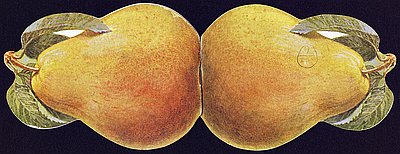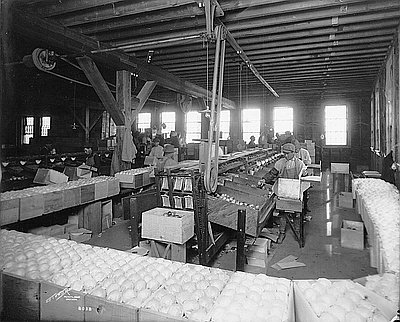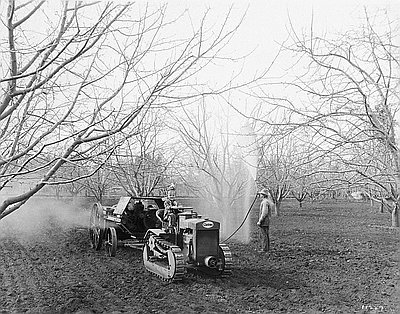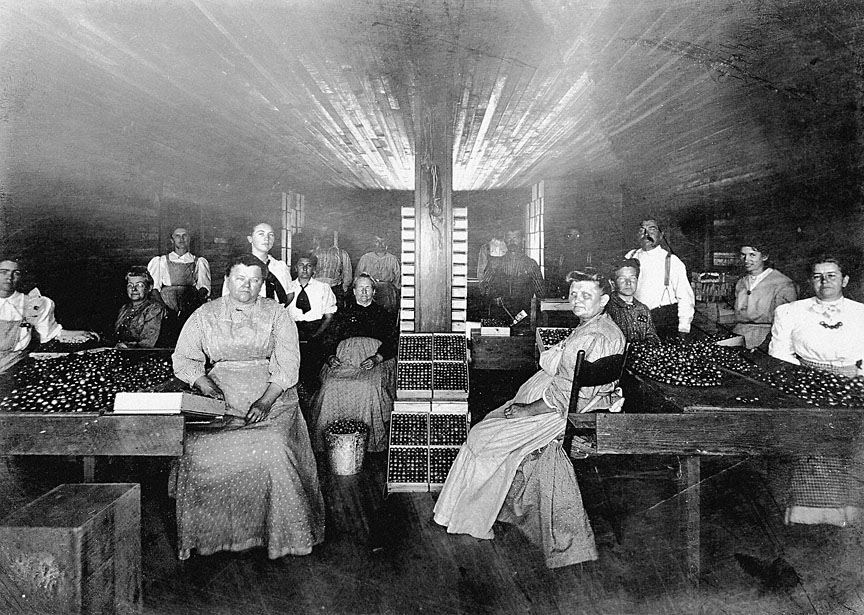- Catalog No. —
- OrHi 11290
- Date —
- c. 1900-1910
- Era —
- 1881-1920 (Industrialization and Progressive Reform)
- Themes —
- Agriculture and Ranching, Environment and Natural Resources, Labor, Trade, Business, Industry, and the Economy, Women
- Credits —
- Oregon Historical Society
- Regions —
- Central Columbia River
- Author —
- Unknown
Women Packing Cherries, Hood River
The fruit industry has been an important part of the Hood River economy since the late nineteenth century. This early twentieth century photograph shows women working as cherry packers in a Hood River warehouse. Several men are also shown. The people in the photograph might have been relatives working for their family orchard, or it is possible that they were seasonal wage laborers.
While women have always worked unpaid on family farms and in home businesses, they began to enter the wage labor force in greater numbers in the late nineteenth century when more jobs became available to them. Many of the jobs were low paying, menial labor — work in factories, laundries, canneries, and as domestic servants. Middle-class white women also found work as telephone operators, teachers, clerks, nurses, librarians, and social workers. A much smaller percentage of women went into professional vocations, becoming doctors and lawyers.
In 1900, census records reported that twenty percent of American women were working outside of their homes. In Oregon, the 1900 census showed only 136 women working as agricultural laborers. However, historians have estimated that a large number of working women were actually uncounted by the censuses because they worked with their husbands and families on farms and in small businesses.
Written by Kathy Tucker, © Oregon Historical Society, 2002.
Related Historical Records
-
Promotional Pamphlet for Oregon Orchards
In the 1920s, the Medford and Ashland commercial clubs produced this pamphlet to attract more people to Jackson County. The pamphlet extolled the climate and orchards of the …

-
Crating Apples in Hood River
This photograph, which shows workers packing apples into boxes, is identified by a hand-written note on the back as being “probably Hood River.” The photographer either was Benjamin …

-
Spraying Orchard, Hood River
This ca. 1930 photograph shows a Hood River orchardist and child spraying pear or apple trees. The photograph is from the Pacific Northwest Electric Railway Association collection at …

